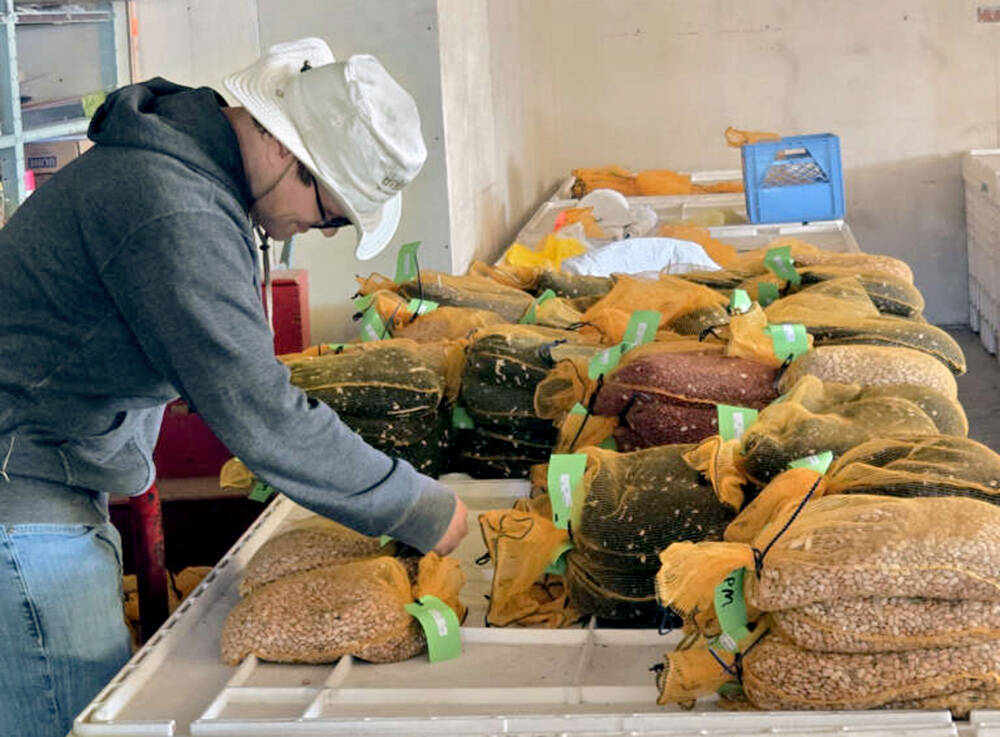Frustration is growing for the Windsor-Essex agriculture sector as negative perceptions around migrant workers and COVID linger.
“These workers did everything that was asked of them,” said Joseph Sbrocchi, executive director and general manager of Ontario Greenhouse Vegetable Growers (OGVG).
The vast majority of Temporary Foreign Agriculture Workers (TFAWs) in Ontario are double or triple vaccinated and must follow strict federal protocols, including providing a negative PCR test before boarding the plane in their home countries to come to Canada.
Read Also

Bean research breeds community giving
University of Guelph dry bean researcher Dr. Mohsen Yoosefzadeh Najafabadi champions sustainability by donating surplus breeding program beans to support food security and community art initiatives.
Upon arrival, unvaccinated workers are given a second PCR test and must isolate until the results are available. As well, airport officials may randomly choose a vaccinated worker for a PCR test but most receive a rapid response antigen test when they arrive at their employer’s site and go to work, isolate or quarantine, depending on the results.
Ken Forth, president of Foreign Agricultural Resource Management Services, said the acting medical officer for Windsor Essex County Health Unit (WECHU), Dr. Shanker Nesathurai, rocked the sector by issuing the three-week pause on Jan. 12, barring TFAW entry into the county.
“In that so-called shut-down period, there were about 500 workers due to be in Windsor-Essex,” said Forth. “The growers brought them in anyway, but they put them in hotels outside of Windsor-Essex. As soon as that was rescinded on Friday (Jan. 14) night, those workers were able to go in.”
Regardless of potential financial impacts to the region, Sbrocchi said county public health action disrespected the workers.
“For a change, I was pleasantly surprised at the level of support from everybody else,” he said. “You know, nobody was looking to demonize migrant workers. That’s pretty hard to do with their record of rolling up their sleeves.”
That said, he’s still concerned there will be some fear-based reaction and stigma in the community now that TFAW COVID and close contact numbers have been in the news again.
“What more can you do if you are them?” said Sbrocchi. “Secondly, they (WECHU) put an entire agricultural ecosystem at risk. Tertiary, there was a lot more than just the greenhouse guys upset. The field people, the processing people, the processors themselves, canning companies – there wasn’t one of them that wasn’t up in arms in this.”
While immediate damage to the food supply chain was limited, Nesathurai’s statements that TFAW housing is sub-par and insufficient to prevent disease transmission continues to vilify producers and TFAW workers as high-risk and vulnerable, he said.
Sbrocchi took exception to the comments, insisting that over the last few years in particular, farmers have made significant upgrades to most of the 1,047 bunkhouses, apartments and homes for workers. And they continue to build on those improvements while waiting for updated migrant worker housing regulations from Employment and Social Development Canada (ESDC).
For most TFAWs, residences mimic a family dynamic. Cohorts of six or eight share living space with two or fewer people to a bedroom. Some are equipped with ensuites and share a kitchen and living room.
It’s not the cramped, dilapidated and overcrowded picture painted by the acting medical health offer, Sbrocchi said.
“The only thing we would ask there is to make sure you come out and see what’s there now, because there are some pretty significant improvements.”
In May 2021, Nesathurai was Haldimand-Norfolk’s medical officer of health. He took part in the Ontario Agriculture, Food and Rural Affairs working group to craft the COVID-19 Agriculture Worker Housing recommendations, which involved stakeholder input from agriculture, health and government.
The process included defining different TFAW housing types: apartments, residential and bunkhouses.
Applying dormitory rules for congregate bunk housing to workers in apartments or private homes with six or fewer people was presented as invasive and unfair.
In those instances, a shared kitchen should not be viewed as riskier than in a family home, especially when the bedrooms sleep two or fewer people with a six-person cap on the household, argued agriculture industry stakeholders.
Nesathurai encapsulated the extenuating circumstances in which housing exceptions are possible on page six of the recommendations when he wrote:
“In some circumstances, a residential cohort can be considered as a single household, provided their living and working arrangements can be reasonably deemed equivalent to that of a single household.
“If, after completion of a risk assessment, the likelihood of transmission of COVID-19 for those individuals is concordant with other residents living in a single household residence in the broader community, some of the measures proposed in this section related to bed spacing and other public health measures may be appropriately adjusted.”













